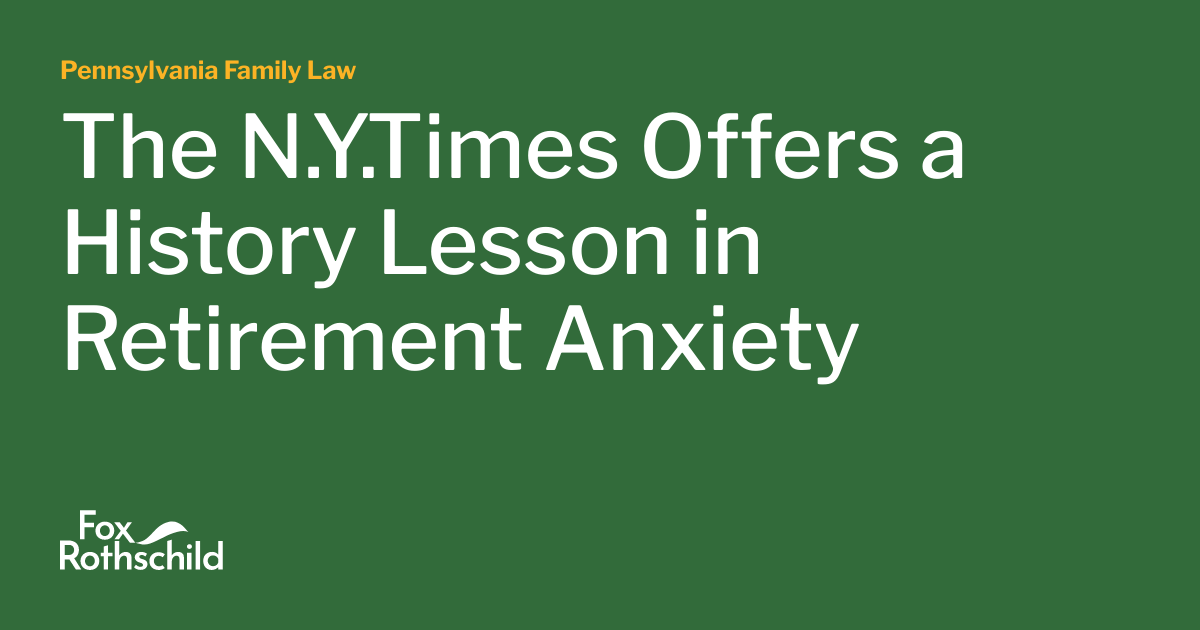The beauty of studying history is that it some times sews together a credible narrative. We have written a fair amount about America’s anxiety, both financial and political. But today’s podcast, an interview with Michael Steinberger offered a history of American retirement and some real insight into why many of us are uneasy about not just our children’s future, but our own.
Steinberger begins by observing that record numbers of Americans are retiring. Children born between 1955 and 1960 represent the bumper crop of the baby boom because it was a day before medical birth control was readily available. The news is that 42% of Americans between 55 and 65 years of age have no significant retirement savings. https://thehill.com/business/personal-finance/3991136-nearly-half-of-baby-boomers-have-no-retirement-savings/ https://www.forbes.com/sites/dandoonan/2024/04/11/americans-are-worried-about-retirement-savings-and-they-should-be/?sh=9ccb4af2a065.
At the risk of repeating what we recently noted in other articles, today’s 65 year old retiree is expected to live roughly 17 years. The average social security payment is $1,767 a month, roughly $21,000 a year. If you have no other funds or assets to tap that is not a lot of money for a very long time. Mr. Steinberger correctly notes that this is contrasted by a lot of American retirees who have significant or even immense wealth because their savings were invested in S&P stocks that went from 150 to 5300 since 1981. Unfortunately, a large number of Americans never boarded the retirement savings bus and many others cashed out before they reached destination Retirement. Steinberger put together the history that brought us here.
Until the Great Depression, there really was no retirement system in the United States. Social Security was adopted in 1935. The first beneficiary got $22 a month in 1940. You were eligible at age 65 at a time when the average life expectancy was 62. But as the union movement gained ground with workers, large employers came forth with the defined benefit plan. “Stick with us to age 65 and we will pay you a monthly benefit until you die.” At first this was not a big lift from an actuarial standpoint. But life expectancy steadily climbed, reaching 70 years by 1965 and 73 by 1980. This corporate obligation started to weigh on company balance sheets and cash flow as more pension systems were created and beneficiaries lived longer.
In 1974 Congress created Individual Retirement Accounts to help workers who had no defined benefit plans save for retirement. In 1978 they adopted Section 401(k) of the Tax Code, a section Steinberger says was originally created for executives. In 1981 a Newtown Square, PA insurance and benefits company came up with the idea that a 401(k) could be used to shield traditional executive bonuses from being taxed immediately by diverting them to retirement plans. At first the idea was dismissed based on expected challenges from the IRS. But when those challenges did not materialize the entire investment world embraced the 401(k).
The business world embraced them as well. Beginning in the 1970s large union based employers were struggling generally as the steel industry atrophied. In 1986 the successor to Republic Steel filed for bankruptcy and announced it could not meet its pension obligations to 82,000 present and retired employees. The history is found at Pension Benefit Guaranty Corp. v. LTV Corp. 875 F2d. 1008 (2d Cir. 1989).
The LTV collapse and the banking crisis of 1990 caused a massive shift away from corporate sponsored defined benefit plans. Instead, corporations moved toward 401(k) plans and offered matches to employee contributions which were deductible business expenses for them. And they freed themselves from any obligation to pay retirement benefits. You got what you saved plus or minus any investment experience. If you stayed the course this has been a glorious ride. The S&P500 index stood at 330 in 1990. Today it closed at 5,300.
Unfortunately, the 401(k) system allowed for leakage. Intended to shield bonus income for executives, it allowed participants to withdraw funds and to borrow against accounts. And it was voluntary. Defined benefit plans were compulsory and there was no conversation to be had about withdrawals until the participant reached retirement age.
Steinberger’s theme was that, unfortunately, Americans can’t be trusted to save. And offensive as that may sound, the data proves it out. More alarmingly, as we wrote on December 19, 2023 there are $1.65 trillion in retirement assets which appear to be floating about unclaimed. Some people are leaving employers and treating their departure as an invitation to cash out small balances. But many are forgetting they had balances to take or to shift to IRAs or other plans.
The divorce lawyer’s challenge is trying to trace employment retirement history. Many people don’t realize they may be pension participants or have any understanding of how their defined contribution plan works. The average baby boomer sticks with an employer a bit over 8 years. That’s five employers between 25-65. The average Gen Z American stays 2.25 years. That’s nearly 18 jobs and realize than many employers don’t admit you to 401(k) plans until you have been with them for twelve months (1,000 hours). This explains why lots of Americans choose not to think about retirement- a glacier like problem which is leaving a schism between those “with” a retirement future and those “without.”

